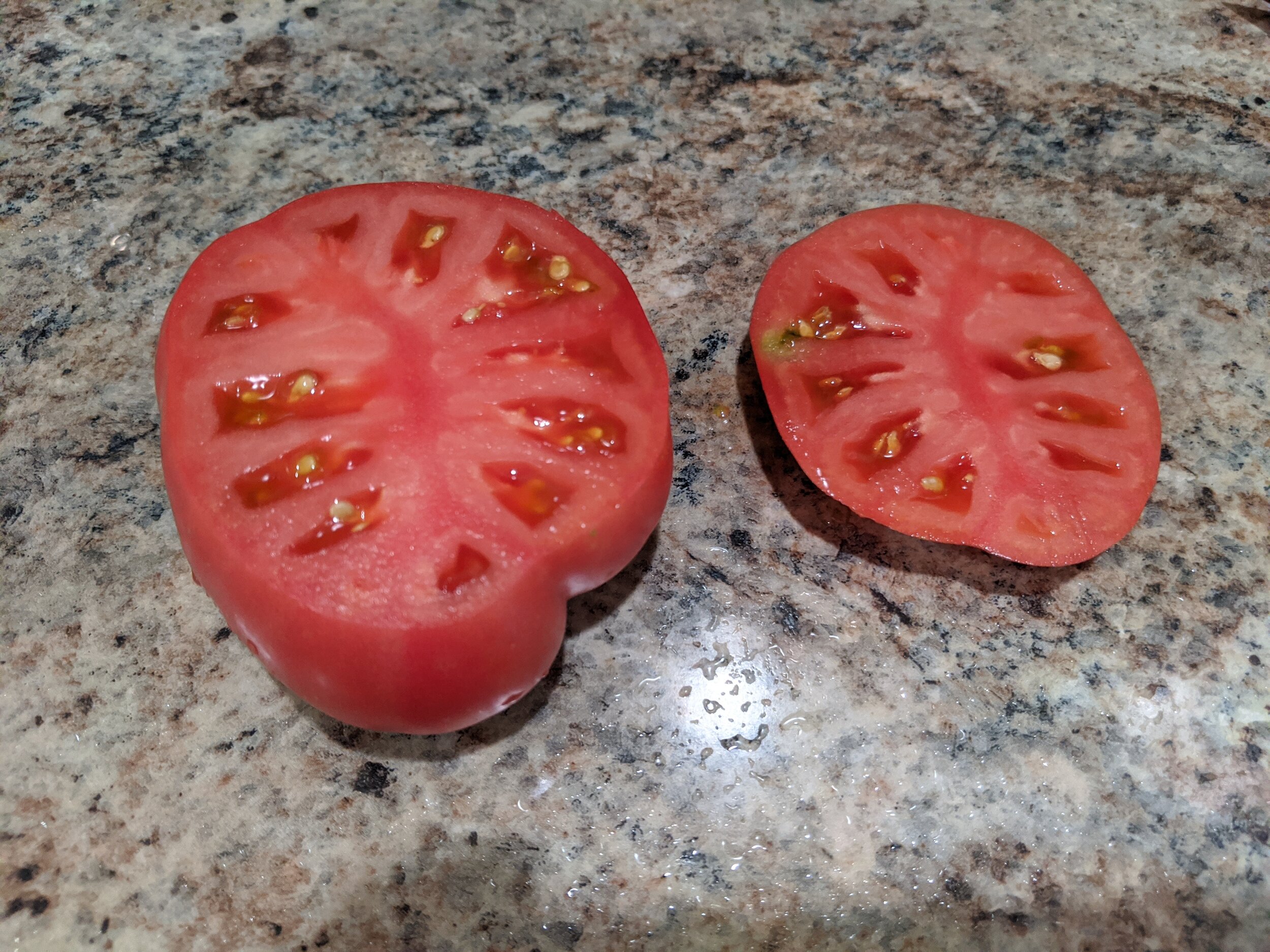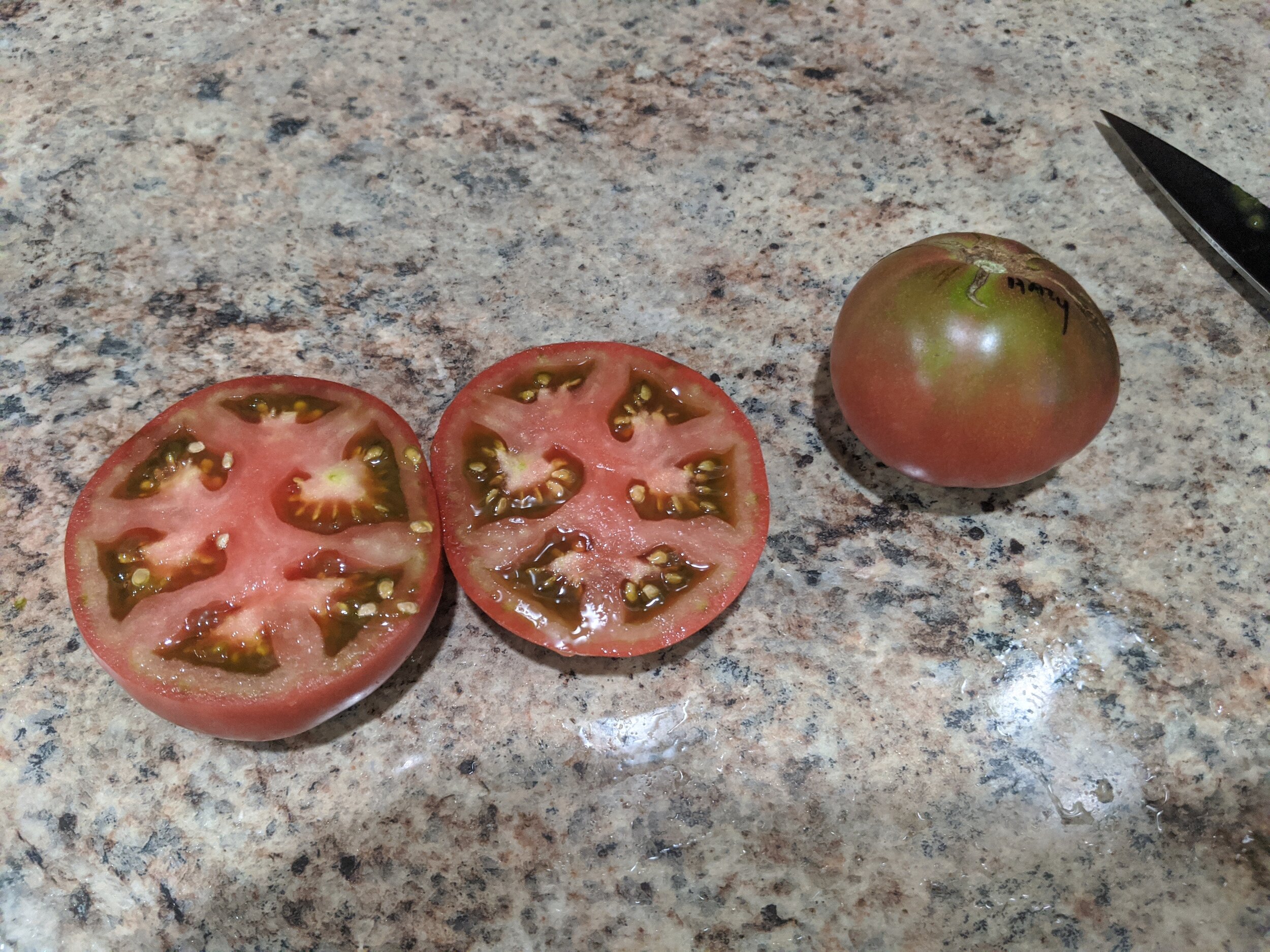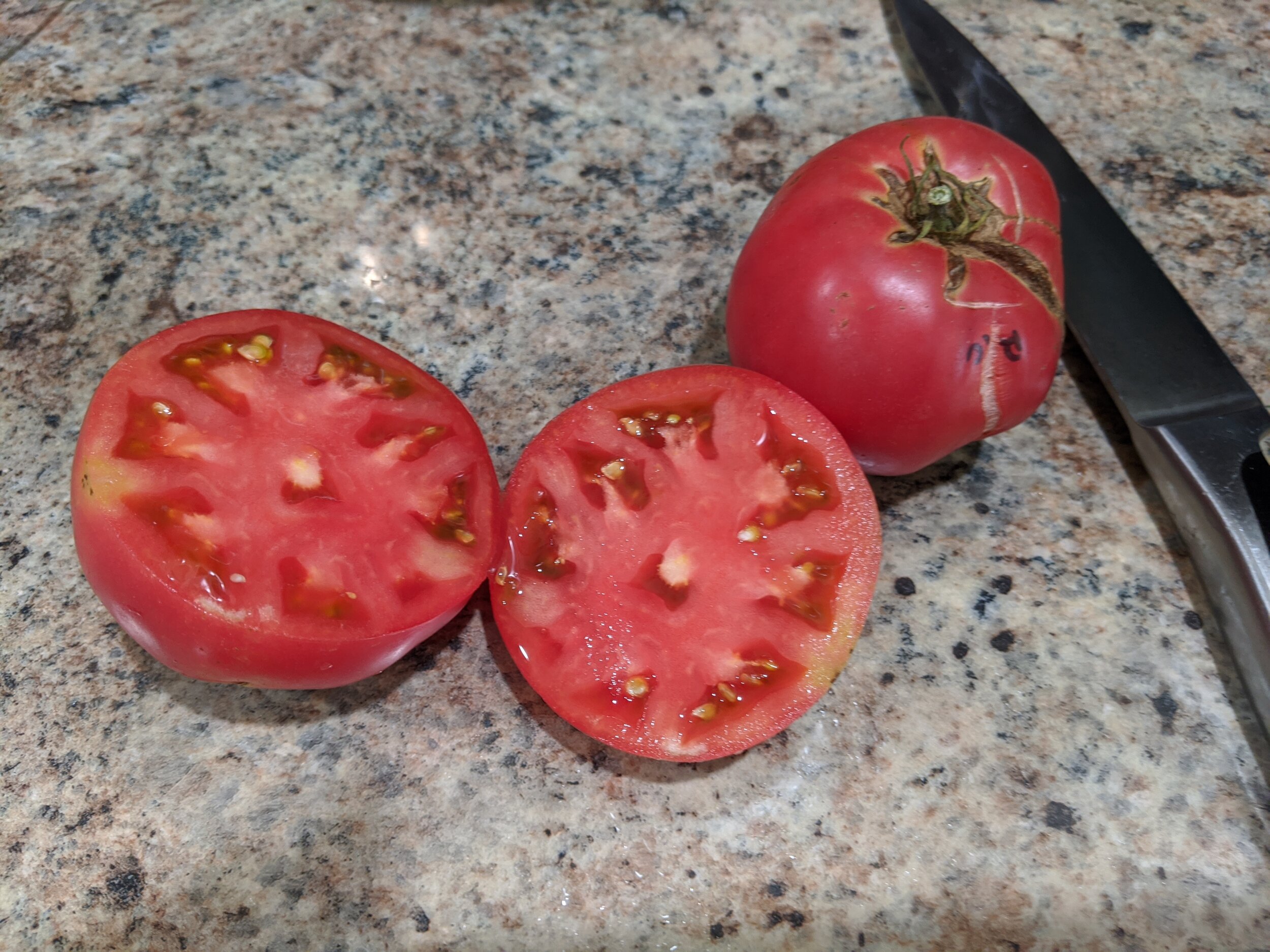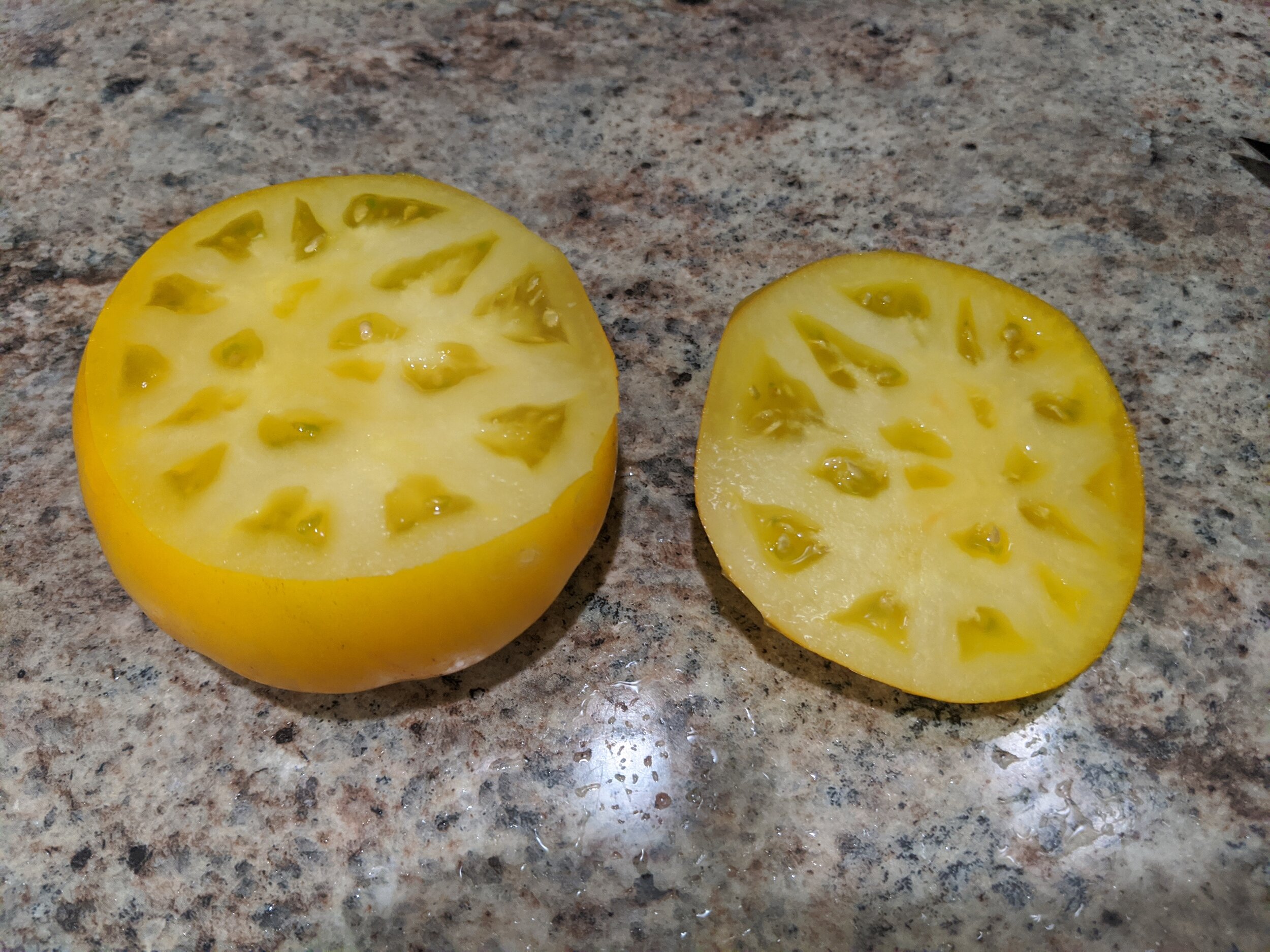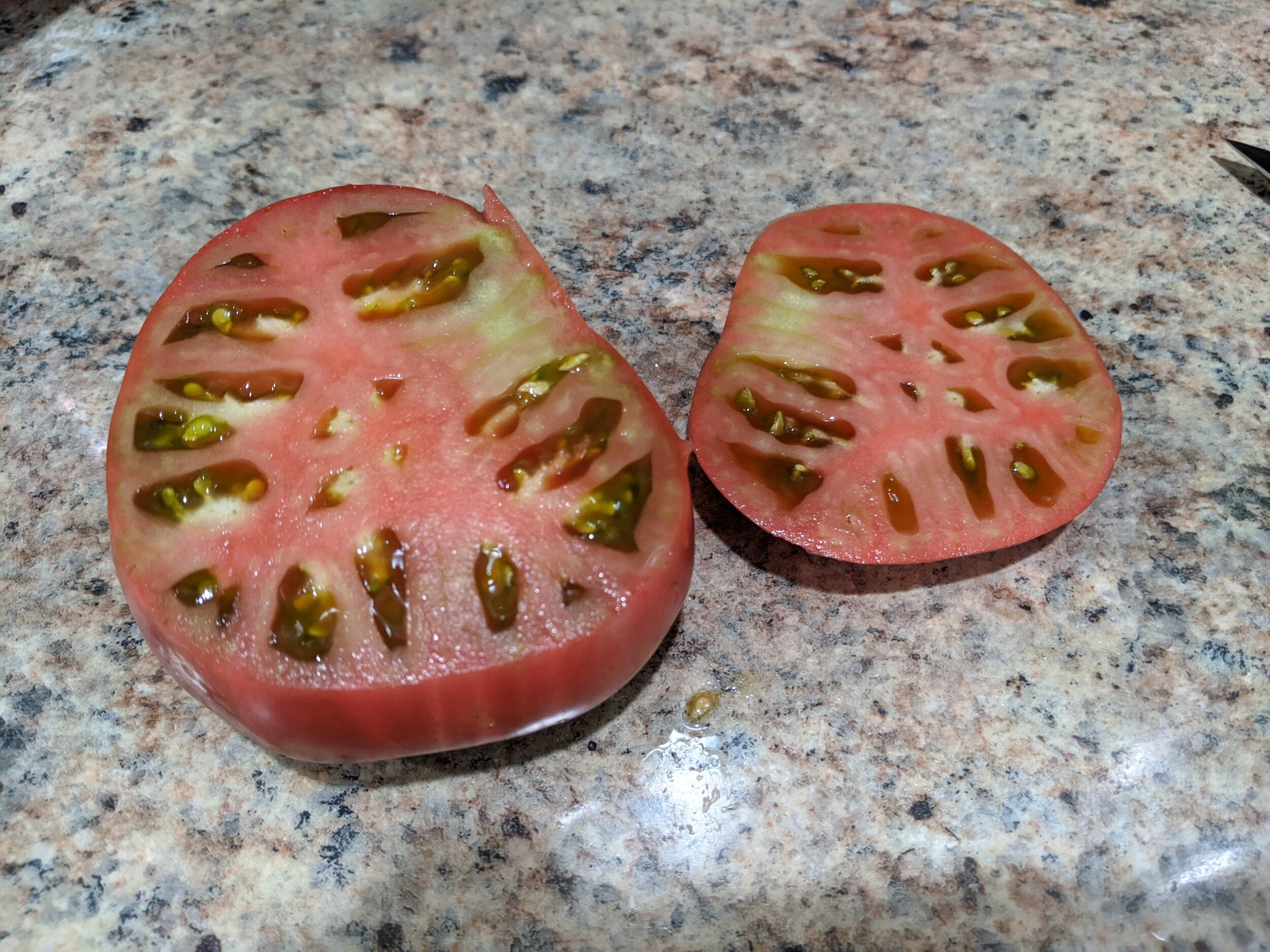Where should I start? It’s late March, our magnolia began to unfurl today, transplanting is underway, straw bales are being prepared, and that’s just a partial list of all of the things I’m juggling right now.
Garden Progress
My seed flat planting dates and types of seeds planted:
Flat 1 - planted February 24 - 20 types of lettuce, three types of spinach, rhubarb, Feaster Family mustard, Little Rhody collards, two types of chard, 4 types of beets, 15 types of daylily seeds, and a few flowers - cardinal flower, larkspur and seeds saved from a shrub seen during our spring hikes.
Flat 2 - planted February 25 - 27 types of indeterminate tomatoes, 4 types of F2 seeds saved from new hybrids I created a few years ago (and grew out last year), 19 types of dwarf tomatoes. For the most part, these plantings will support spring seedling sales, and some will end up in my straw bales as well.
Flat 3 - planted February 26 - 13 cells of eggplants, 21 cells of peppers, 1 cell of ground cherry, 14 types of indeterminate tomatoes and 1 type of dwarf tomatoes. There are some interesting things in flat 3, including some rare peppers and some new family heirlooms, as well as some older tomato seeds. The eggplants and peppers and a few of the tomatoes and the ground cherry will be part of my spring seedling sales, with a few winding up in my garden.
Flat 4 - planted March 13 - all tomatoes, including all of the new F1s I created last year (17 types), 26 cells of indeterminate tomatoes, 5 types of dwarf tomatoes, and 2 types of determinate tomatoes. I hope to grow all of the new F1s, and in this flat are a few other new family heirlooms, some older varieties that need growing, and more for my seedling sales.
Flat 5 - planted March 23 - 5 cells of eggplants, 5 cells of peppers, the 9 tomatoes in the 3 seedlinked seed collections I am curating, 19 cells of dwarf tomatoes, 11 types of indeterminate tomatoes and 1 determinate tomato. This is another really interesting mix, with some replants of varieties that didn’t appear to germinate well, some additional dwarf varieties - some of which I will grow, and many for seedling sales.
I will plant a flat 6 about 4-5 days before Joe Lamp’l’s first visit to my garden (April 6). Why is Joe visiting? I’ll discuss that in the final section, below! In that flat will be a zinnias, basil, and some more tomatoes.
Transplanting
I started moving clumps into 3.5 inch pots about a week ago so that they would be able to hold a bit more prior to transplanting to individual posts. I moved the lettuce as clumps on March 25. I also started transplanting tomatoes into individual pots on March 25, and got lots more done today.
Start of germination data
I was concerned that seed I sent out may have germination issues, based on some banter with Instagram gardening friends. In truth, a few varieties are not showing the quality I typically achieve. I will have much more data in the next few days, but here is the first:
Andrew Rahart’s Jumbo Red T19-13 - 100%
Aker’s West Virginia T19-16 - 95%
Brandywine T20-16 - 16%
Ferris Wheel T20-5 - 72%, but 3 seedlings are dwarf, and 3 seedlings are potato leaf.
Polish T20-7 - 36%, and 1 of the plants are regular leaf
Stump of the World T20-12 - 85%, and 1 of the plants are regular leaf
Cherokee Purple T20-11 - 97%
Cherokee Chocolate T20-13 - 96%
Casey’s Pure Yellow T20-14 - 92%
Lillian’s Yellow Heirloom T20-10 - 100%, and 1 of the plants are regular leaf
Cherokee Green T20-8 - 91%
Microdwarf X Indeterminate F2 T20-26 - 97%, including 19 indeterminate, 7 dwarf type and 3 not yet sure.
Fuzzy determinate X Indeterminate F2 T20-25 - 100%, including 11 short fuzzy plants, 8 tall fuzzy plants and 11 normal stem and leaf indeterminate plants.
Suzy F2 T20-28 - 100% including 22 regular leaf indeterminate, 3 potato leaf indeterminate, 1 potato leaf dwarf and 4 regular leaf dwarf.
Blazy F1 20-29 - 100%, including a very wide variety of seedlings - indeterminate regular and potato leaf, regular or yellow leaf color, and regular and potato leaf dwarfs, regular color and yellow color. This was expected!
I am disappointed with the low germinations of 2020 saved Brandywine and Polish, and think that higher humidity in our house (we had windows open and didn’t use the AC all summer) occasionally impacted seed quality.
In my next report, I hope to fill in more of the picture, with another 30 varieties saved in 2020 awaiting transplanting.
Straw Bale Garden plans
I’ve purchased and am half way through preparing 20 straw bales, with plans to purchase another 10, probably tomorrow. 4 of the bales are pushed together for bush beans, 4 pushed together for summer squash, and the other 12 + 10 (new ones) will contain tomatoes. I’ve not yet completely decided which varieties to grow, but the 8 indeterminate heirloom X indeterminate heirloom hybrids I created last year will all get straw bale places. The other new hybrids will be grown in containers.
Social Networking ruminations
Ah, I’ve spent a lot of time pondering my approach for this year. Last year I was really “out there” with my weekly Instagram Live sessions. I really enjoyed them - they were fun, I got to share a lot and got to learn a lot from those who watched and asked questions or posted comments.
But a phone call from Joe Lamp’l a few months ago completely rocked my year. I’ll dedicate the last section of this blog talking about it in more detail, but it is certainly going to be a different year - a different garden - for me. I will be doing the occasional live, and continuing my blog and newsletter, but won’t have the opportunity to be as regular in the live sessions - I won’t have as much time. I will do some specifically in support of my role as Seedlinked seed collection curator, but will sprinkle in some live check-ins as well.
Facebook - yes, I’ve crept back on. I need to, in order to support my new endeavor with Joe. But I’ve been off for a long time, and at this point all I’ve done is register. There are an avalanche of friend requests I’ve not addressed. I’ve filled in no information at all. I will, when the time is right - but my presence on Facebook will be solely to participate with Joe in his garden school for our new course.
Growing Epic Tomatoes - Something New! And….about to Keep Me Busy!
Let me start by using a paragraph that Joe is using to talk about this new course.
“The Online Gardening Academy is committed to bringing you the highest value in online training for some of the most popular and important topics when it comes to gardening. Currently there are 3 courses in the academy: Master Seed Starting, Beginning Gardener Fundamentals, and Mastering Pests, Diseases, and Weeds.
The newest course that we’re excited to announce is launching on May 11th. It’s called Growing Epic Tomatoes, and it’s a course that is being taught by Craig LeHoullier (author of the best selling book, Epic Tomatoes), and Joe Lamp’l, he of Growing a Greener World, the joegardener podcast, and his Online Gardening Academy, of which Growing Epic Tomatoes will be a component course. The course will be a completely comprehensive dive into every thing you need to know and more about growing epic tomatoes, divided into 10 packed modules.”
I’ve always wanted to create a tomato growing gardening course, but though I am strong in the content part, the production, filming and other supporting aspects was a real weakness for me. The collaboration between Joe and I will be pretty magical, I think. Anyone who has listened to our podcast chats or watched the GGW episode know that we have a really comfortable rapport, and share a depth and detailed approach for clarity and knowledge.
Joe and his crew’s first trip to my garden happens in early April, and this is the first of several, in order to capture every single aspect of tomatoes that you can think of. It will be busy, packed, great fun, and I will finally be practicing - and demonstrating - what I preach (even the bits that I haven’t done so well - pruning! staking! topping!).
Stay tuned for more details - Joe and I will soon be co-hosting a live webinar where all will be revealed. The webinar will be repeated live over a series of days so that all that have interest will have an opportunity to attend one. The dates of the webinars will be widely posted once we have the dates and times.
In the meantime, enjoy spring, happy gardening, and watch my blog and Instagram feeds for news!
















































